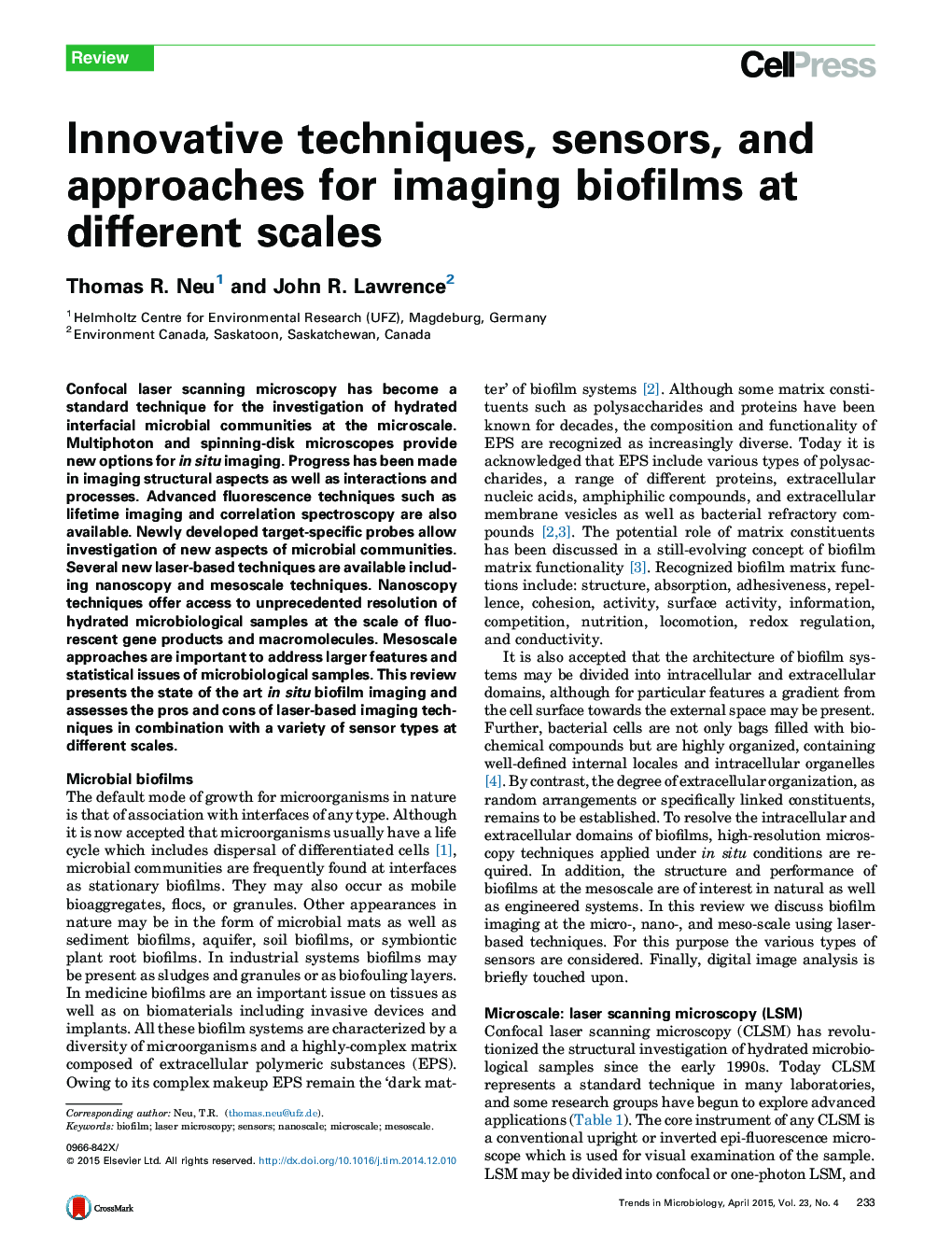| Article ID | Journal | Published Year | Pages | File Type |
|---|---|---|---|---|
| 3421809 | Trends in Microbiology | 2015 | 10 Pages |
•This review discusses advanced confocal laser-scanning microscopy of biofilms (probes, hardware, and data analysis).•How biofilm assessment can be carried out at the nanoscale by SIM, STED, and blink microscopy.•How biofilm imaging can be performed at the mesoscale using optical coherence tomography.•Visualization, quantification, and deconvolution by digital image analysis is also explored.
Confocal laser scanning microscopy has become a standard technique for the investigation of hydrated interfacial microbial communities at the microscale. Multiphoton and spinning-disk microscopes provide new options for in situ imaging. Progress has been made in imaging structural aspects as well as interactions and processes. Advanced fluorescence techniques such as lifetime imaging and correlation spectroscopy are also available. Newly developed target-specific probes allow investigation of new aspects of microbial communities. Several new laser-based techniques are available including nanoscopy and mesoscale techniques. Nanoscopy techniques offer access to unprecedented resolution of hydrated microbiological samples at the scale of fluorescent gene products and macromolecules. Mesoscale approaches are important to address larger features and statistical issues of microbiological samples. This review presents the state of the art in situ biofilm imaging and assesses the pros and cons of laser-based imaging techniques in combination with a variety of sensor types at different scales.
